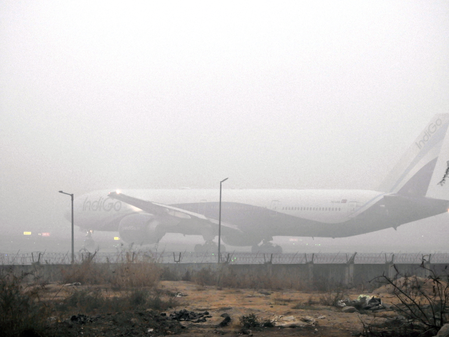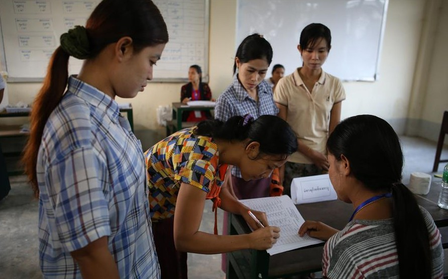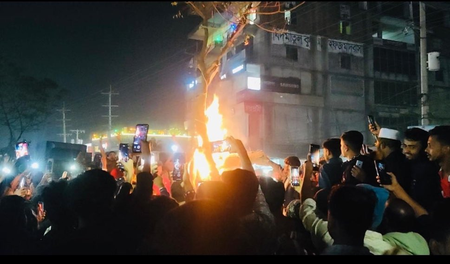
Washington, Sep 14 (IANS) The “only viable path” toward lasting peace is through the “complete” denuclearisation of the Korean Peninsula, a State Department spokesperson said, after North Korea made a rare disclosure of a uranium enrichment facility this week.
The spokesperson made the remarks, renewing calls for Pyongyang to return to “constructive” dialogue and reaffirming America’s “ironclad” security commitment to South Korea and Japan on Friday, reports Yonhap news agency, quoting local media.
The North’s Korean Central News Agency (KCNA) reported on Friday (local time) that leader Kim Jong-un visited a uranium enrichment base and called for increasing the number of centrifuges for uranium enrichment to bolster its nuclear weapons arsenal — a move ahead of the November 5 presidential election in the United States.
“The DPRK’s advancement of its nuclear and ballistic missile programs directly undermines the global non-proliferation regime. The only viable path toward lasting peace is through the complete denuclearisation of the Korean Peninsula,” the spokesperson said in response to a question from Yonhap News Agency.
DPRK stands for North Korea’s official name, the Democratic People’s Republic of Korea.
“We call on the DPRK to fully comply with its obligations under UN Security Council resolutions and return to constructive dialogue without delay,” the official added.
The spokesperson stressed that to the extent that North Korea continues to threaten the region and the world, Washington will continue to strengthen its security relationships with its allies and partners.
“The US commitments to the defence of the Republic of Korea and Japan remain ironclad,” the official said.
Earlier in the day, White House National Security Communications Adviser John Kirby highlighted the US has “devoted” more intelligence, surveillance and reconnaissance assets for security on the peninsula.
“I am not able to get into an intelligence analysis one way or the other here. I would simply say that we continue to monitor North Korean progression in their nuclear ambitions, as well as their ballistic missile technology and program,” Kirby said in an online press briefing.
“That is exactly why or one of the reasons why President Biden has worked so hard to revitalise a network of alliances and partnerships in the region. It is also why he has devoted more, in particular, intelligence, surveillance and reconnaissance assets, prioritising those for the area on and around the Korean Peninsula,” he added.
He also stressed that Washington continues to make clear to Pyongyang that it is willing to “sit down without preconditions and talk about the denuclearisation of the peninsula.”
State Department spokesperson Matthew Miller said that he saw a video on the uranium enrichment facility and that it does not change the overall US policy on North Korea.
“New video … I don’t know that it represents any new capability by the North Korean regime,” he said during a press briefing.
“We are going to continue to make clear that we will defend our South Korean and Japanese allies and will continue to work for the full denuclearisation of the Korean Peninsula.”
Asked if a North Korean nuclear test is imminent, Miller said he does not want to make any predictions on that.
North Korea’s disclosure of the nuclear facility, coupled with its short-range missile launches this week and other acts, has added to concerns that Pyongyang could engage in major provocations near the US presidential election in a move to bolster its leverage.
In its Friday report, the KCNA said that Kim visited the Nuclear Weapons Institute and the “production base of weapon-grade nuclear materials.” The dispatch did not elaborate on where that facility was located or when Kim had visited the site.
Highly enriched uranium and plutonium are essential nuclear materials for the production of nuclear warheads.
South Korean and US intelligence agencies believe North Korea operates uranium enrichment facilities in Kangson on the outskirts of Pyongyang and at the Yongbyon nuclear site, north of its capital.
In 2010, North Korea invited Siegfried Hecker, a renowned American nuclear scientist, to inspect its uranium enrichment facility in Yongbyon.
–IANS
int/sd/




